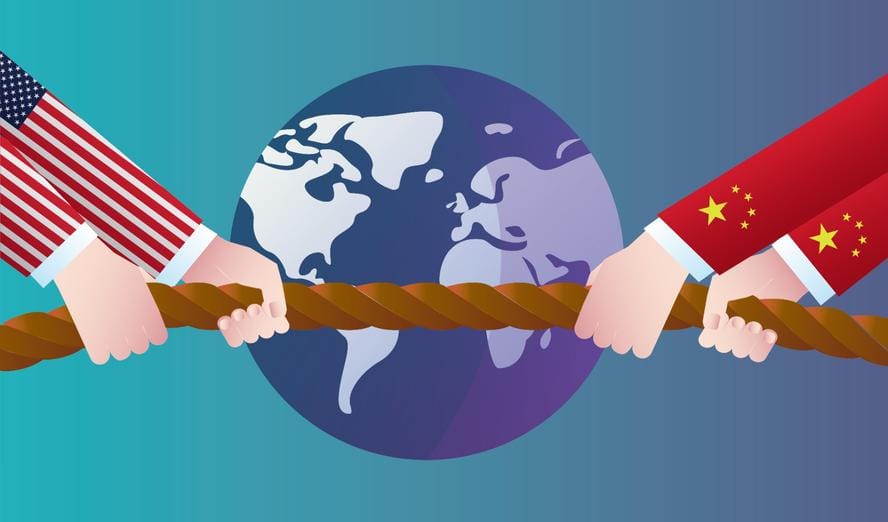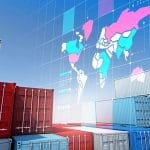Tariffs — taxes levied on imported goods — are among the oldest tools in a nation’s economic arsenal. While they may seem straightforward, their effects on global economies are anything but simple. In recent years, particularly since the U.S.-China trade war began in 2018, tariffs have returned to the center of geopolitical and economic strategy. This article explores the economic impact of tariffs with a technical focus on how they have affected the United States and China — the world’s two largest economies.
Understanding Tariffs: Purpose and Mechanisms
Tariffs are typically imposed for one or more of the following reasons:
Protect Domestic Industries: By making foreign products more expensive, governments can promote local alternatives.
Generate Revenue: Especially in developing countries, tariffs can serve as a source of state income.
Political Strategy: Tariffs may be used to pressure other countries in trade negotiations.
Types of tariffs include:
Ad valorem: A percentage of the value of the good.
Specific: A fixed fee per unit.
Compound tariffs: A combination of both.
Tariffs can impact multiple layers of the economy — from consumers and manufacturers to entire supply chains and global trade relationships.
Historical Context: U.S.–China Trade Relations
The United States and China have been deeply interconnected economically since China’s entrance into the World Trade Organization (WTO) in 2001. However, tensions have simmered beneath the surface for years, related to:
Trade deficits
Intellectual property (IP) theft
Forced technology transfers
Subsidies to Chinese state-owned enterprises
In 2018, under President Donald Trump, the U.S. launched a series of tariffs targeting over $250 billion in Chinese goods. China retaliated, targeting American agricultural and manufactured exports. This back-and-forth triggered what became known as the U.S.–China trade war.
Economic Impact on the United States
1. Consumer Prices and Inflation
Tariffs are essentially taxes on imports, and when those imports are critical components or finished goods, the extra cost is often passed onto consumers. In the U.S.:
Prices rose for consumer electronics, clothing, and household goods.
Inflationary pressure was observed in sectors heavily dependent on Chinese imports.
Some U.S. manufacturers absorbed the costs to stay competitive, reducing profit margins.
According to a 2019 study by the Federal Reserve Bank of New York, American consumers and businesses bore almost 100% of the tariff costs, rather than Chinese exporters.
2. Manufacturing and Supply Chains
U.S. manufacturers faced dual pressures:
Higher input costs (especially for machinery and electronics).
Uncertainty in supply chains, disrupting production planning.
Some industries relocated manufacturing to Vietnam, India, or Mexico to mitigate the tariffs, creating a restructuring of global supply chains but not necessarily “reshoring” to the U.S.
3. Agriculture
China’s retaliatory tariffs specifically targeted American agriculture — soybeans, pork, and corn — aiming at Trump’s voter base in rural states.
U.S. soybean exports to China plummeted by over 70% in 2018.
The federal government issued $28 billion in aid to affected farmers between 2018 and 2020.
4. GDP and Employment
Most analyses suggest that the trade war slightly reduced U.S. GDP — estimates range from 0.3% to 0.7% contraction by 2020.
Employment effects were mixed:
Some sectors gained from tariff protections (e.g., steel).
Others, such as agriculture and consumer retail, suffered layoffs or slowed hiring.
Economic Impact on China
1. Export Slowdown
Tariffs hit China’s export-led economy hard, particularly in:
Electronics
Machinery
Furniture
The Chinese government responded with fiscal stimulus, tax cuts, and interest rate adjustments. Still, by 2019, Chinese exports to the U.S. had dropped by $35 billion, while the overall export growth slowed.
2. Supply Chain Reconfiguration
Chinese companies began:
Diversifying export markets toward Europe, Southeast Asia, and Africa.
Accelerating domestic self-reliance, especially in semiconductors and robotics.
Relocating low-margin manufacturing to other Asian countries (e.g., Cambodia, Bangladesh).
This shift led to the China Plus One strategy — a diversification away from total dependence on China in global sourcing.
3. Technological and Industrial Policy Shift
Tariffs fast-tracked China’s commitment to the “Made in China 2025” initiative, aiming to:
Develop advanced manufacturing capabilities.
Reduce dependence on foreign technology.
Support state-owned enterprises (SOEs) in strategic sectors.
The government increased subsidies in AI, 5G, and electric vehicles (EVs) to maintain industrial momentum despite external pressures.
4. Domestic Consumption and Inflation
While the yuan depreciation cushioned some tariff effects, rising prices of imported American goods (like agricultural products) affected domestic inflation. To stabilize food prices, China increased imports from Brazil and other non-U.S. suppliers.
Global Economic Ripple Effects
Tariffs between two global powers sent shockwaves through international markets:
Global growth forecasts were cut by the IMF and World Bank.
Emerging markets reliant on Chinese manufacturing saw reduced orders.
Global supply chains were disrupted, leading to inventory shortages and price volatility.
Several multinational companies — including Apple, HP, and General Motors — had to redesign their sourcing strategies to reduce exposure to China.
Post-2020 and the Biden Administration
While the Biden administration adopted a less confrontational tone, many Trump-era tariffs remained in place:
Emphasis shifted toward multilateralism and working with allies.
Strategic tariffs were seen as leverage in negotiations on climate, labor standards, and digital trade.
New discussions around “economic security” and semiconductor independence emerged, leading to CHIPS Act investments in the U.S.
Tariffs are no longer just about economics — they’re also about national security and technological leadership.
Comparative Summary: U.S. vs. China Tariff Impact
| Aspect | United States | China |
|---|---|---|
| GDP Impact | -0.3% to -0.7% (est.) | Slowed growth, but stabilized via stimulus |
| Consumer Prices | Increased | Slightly impacted, mitigated by other trade |
| Manufacturing | Higher input costs, relocation efforts | Export loss, supply chain diversification |
| Agriculture | Heavy losses, federal bailout | Switched to other suppliers |
| Strategic Response | Reshoring, tech investment | “Made in China 2025”, global market pivot |
| Long-Term Change | Supply chain restructuring | Emphasis on self-reliance & innovation |
Conclusion: Are Tariffs Worth It?
Tariffs, while designed to protect domestic industries, often bring unintended consequences: price hikes, supply shocks, retaliatory measures, and global uncertainty. The trade war between the U.S. and China has reshaped not just bilateral trade — but the very structure of global commerce.
In 2025, we are witnessing a world where tariffs are no longer just an economic tool, but also a diplomatic and technological weapon. For policymakers, the challenge lies in balancing national interests with global economic stability.



